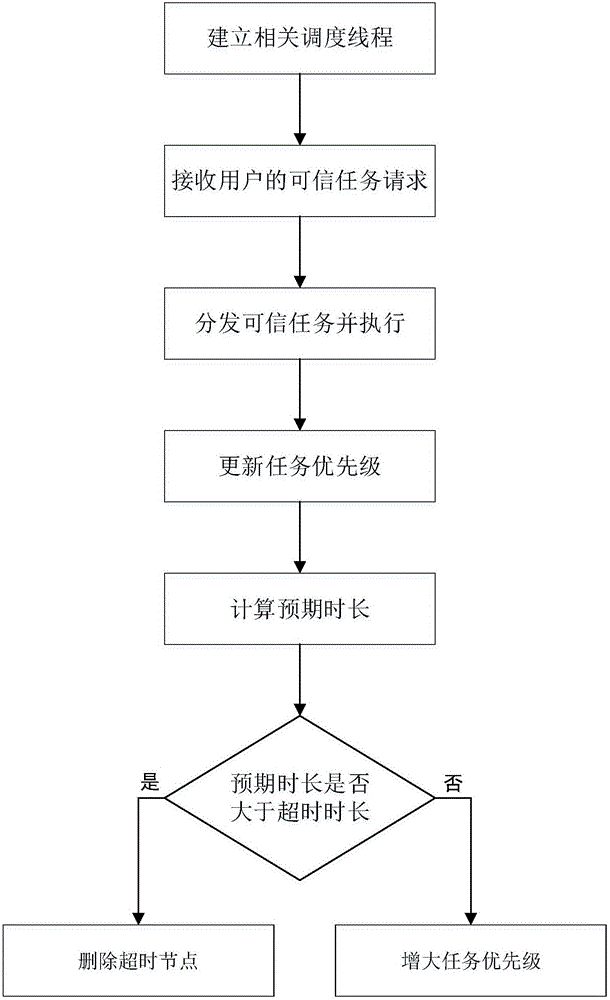Task scheduling method for airborne trusted computing platform
A technology of trusted computing and task scheduling, applied in the computer field, can solve the problems of system paralysis, delayed execution of important tasks, lack of adjustment mechanism, etc., to achieve effective utilization, avoid data loss, and reasonable task scheduling.
- Summary
- Abstract
- Description
- Claims
- Application Information
AI Technical Summary
Problems solved by technology
Method used
Image
Examples
Embodiment Construction
[0036] Refer to attached figure 1 , the concrete steps of the present invention are as follows.
[0037] Step 1, establish relevant scheduling threads.
[0038] Set up a task waiting queue.
[0039] When the airborne trusted computing platform is initialized, a receiving thread, a distribution thread, and a monitoring thread are respectively established in the embedded real-time operating system of the airborne computer.
[0040] The scheduling component resides in the system in the form of a service thread, and starts together when the airborne trusted computing platform starts, and maintains the task waiting queue in real time. The receiving thread is responsible for monitoring concurrent task requests, and the dispatching thread is responsible for taking out the node with the highest priority from the task waiting queue and sending it to the trusted platform module for execution. The monitoring thread counts task status information and feeds it back to the dispatching thr...
PUM
 Login to View More
Login to View More Abstract
Description
Claims
Application Information
 Login to View More
Login to View More - R&D
- Intellectual Property
- Life Sciences
- Materials
- Tech Scout
- Unparalleled Data Quality
- Higher Quality Content
- 60% Fewer Hallucinations
Browse by: Latest US Patents, China's latest patents, Technical Efficacy Thesaurus, Application Domain, Technology Topic, Popular Technical Reports.
© 2025 PatSnap. All rights reserved.Legal|Privacy policy|Modern Slavery Act Transparency Statement|Sitemap|About US| Contact US: help@patsnap.com



